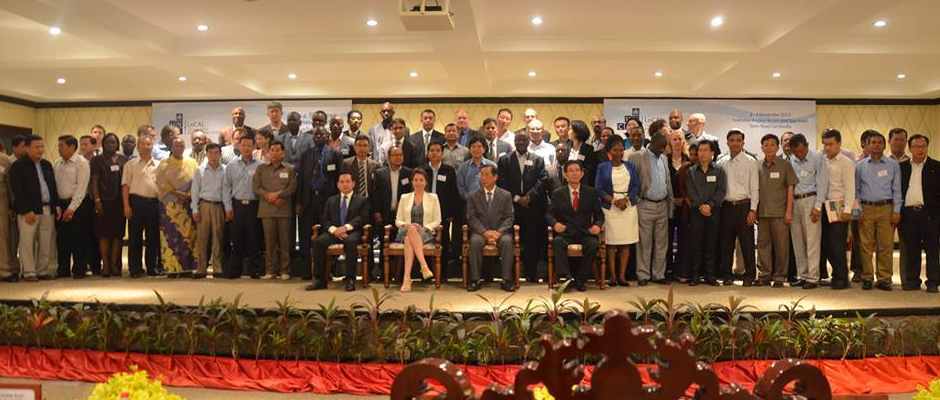
As far back as 2006, cities were found to account for over 70% of energy-related carbon emissions. And cities are growing rapidly in both population and land area covered. The UN reports that ninety percent of urbanization between 2018 and 2050 will be in Asia and Africa. Urban Institute colleagues reviewed the literature and found that the annual costs of adaptation are likely to be $280-500 billion per year by 2050. This is dramatically more than the current $100 billion per year pledged at Paris in 2015. While rich country cities currently account for greater per capita carbon output and may experience greater overall costs to turn toward net zero, in poorer countries these costs and those to adapt to climate changes already in motion, will be higher as a share of their GDP. Yet, in Glasgow, the parties’ new commitments were vague about levels of future support to cities in the global South. Even if finances can be found, governance obstacles to putting finance to work, especially in the global South, are key to cities’ contribution to the global response and need to be addressed directly in country and city adaptation planning and action and in donor commitments to the global challenge.
Despite the low urban profile emerging from Glasgow, many city leaders have not been waiting for an invitation to action. While most financial commitments that have been made to the Global South have targeted mitigation steps, city leaders know that they also face the costs of adapting water systems, protecting low-lying residences (and their residents) and businesses, strengthening disaster recovery capability, and strengthening natural barriers among many other steps. In the wake of the Kyoto and Paris climate agreements, many city-led and city-focused organizations were launched (C40, ICLIE, CCFLA, GCOM and others). These efforts have given visibility to urban challenges and examples of significant urban leadership. Reports of such efforts are plentiful; the examples are powerful and warrant our attention. Yet while applauding, we must note that these examples are not, by themselves, solutions to two main challenges facing urban adaptation to climate change.
The scale of resources required to meet current and future infrastructure and human service needs.
Cities across the global South face compounding challenges: both rapid urbanization and climate change. Even without climate-related burdens on water systems, housing, large migrant communities, health systems, and informal urban areas, especially in poorer countries, cities already face dramatic infrastructure challenges to meet the needs of rising populations and historical inequities in access to basic services. (See for example reports on Asian and African urbanization). A 2011 study of India’s future infrastructure needs alone put a 20-year price tag of more than $800 billion on the cost of simply overcoming decades of underinvestment in basic services. This is widely recognized, as is the need for both local resources and support from richer countries. But the gap is widening; according to the Global Center on Adaptation, external funds dedicated to climate adaptation needs in Africa may account for only 20% of what is needed by 2030.
While both bilateral donors and the multilateral institutions are making dramatic shifts in their portfolios to align with both net zero goals and adaptation needs, these funds need to find their way to the local investments that address existing and growing needs and disparities where both mitigation opportunities and adaptation needs are high.. Whether such funds can navigate that last mile – getting to work in cities- is the second challenge. Large amounts of private capital were also proposed in Glasgow; however, these resources too need to navigate the same fragmented last mile.
Extremely constrained or fragmented local autonomy
Extremely constrained or fragmented local autonomy to address adaptation challenges characterizes the situation facing cities in many, many countries in the global South. “Decentralization” in many countries has left cities with much responsibility, but much less autonomy to set policy, raise or allocate resources or oversee implementation of capital projects. (The 2011 study of needed infrastructure in India, noted above, identified governance as the top culprit in the infrastructure gap. My own 2018 study in the city of Indore India confirmed challenges in communication, coordination and cooperation that hamper urban leadership and citizen-facing service provision.)
The demonstration value of the many valuable steps being taken by innovative mayors, especially those standouts in the world’s less prosperous countries will be muted not only by the scale of needed finance, but especially by very real costs – an implicit tax – imposed by weak systems of governance – the fiscal, political and administrative systems within which cities, as subnational bodies, operate. Politely-named the “enabling environment” in an excellent World Bank report on The State of Cities Climate Finance, the outcome of the incomplete delegation of functions, or the misalignment of discretion, accountability and resources, is often mis-summarized as the “lack of capacity” of city leaders. But such a limitation is often by design – the result of incomplete or asymmetric decentralization policies and practices around key climate-affected services and infrastructure. The resulting fiscal and administrative spaghetti may seem illogical in retrospect. Yet the battles that leave approval of expenditures to be second-guessed by a central ministry, make the timing of transfers an arbitrary occurrence, or limit the ability to fire non-performing workers to a far-away civil service board are not in place by accident. Further, urban expansion often leaves political boundaries out of date. Some countries, such as Colombia have recognized and tackled the multilevel governance problem.
The “tax” of fragmented governance will weigh on action in the last mile of effective urban adaptation.
Just as it explains much of the current infrastructure gap, fragmented governance will reduce the effectiveness of the large sums being bandied about as needed or promised to flow to cities.
This suggests to me that alongside the attention to climate change measurement, and rich country commitments of needed resources, urban climate risk management must take stock of the multi-level governance context for both climate policy and expenditures in each country, pressing country partners to address gaps, overlaps and conflicts in the enabling environment for local leaders and those who would invest in their resilience. Country adaptation plans need to account for the functionality of intergovernmental processes.
An urban adaptation challenge can focus the many stakeholders on solving governance problems.
This will not be easy. While often viewed as technical matters, the arrangements of autonomy are intensely political. Existing arrangements have many existing beneficiaries who are not likely to give up their fragments of the messy whole. Local leaders and international experts are well-familiar with these challenges. Yet, as Covid has encouraged streamlining of many decision processes in the health arena, meeting the climate challenge calls on all to support clarifying both functional and fiscal assignments of subnational governments. Overcoming this deficit in alignment of governance practices and institutional incentives can ease the way for more autonomy (for problem-solving and innovation by mayors and other urban leaders) and enable more financial support (by addressing widespread “enabling environment” barriers).
Addressing this governance gap would itself be enormously effective support for mayors and other local leaders.
Charles Cadwell is an Institute Fellow at the Urban Institute and was an advisor to the Democracy and Governance Practice at Chemonics Inc.



